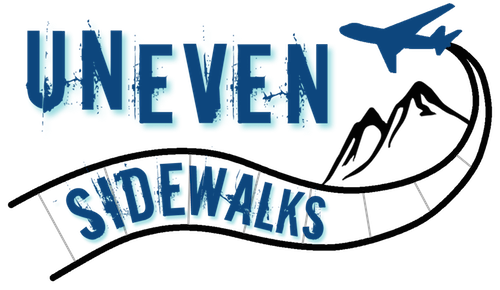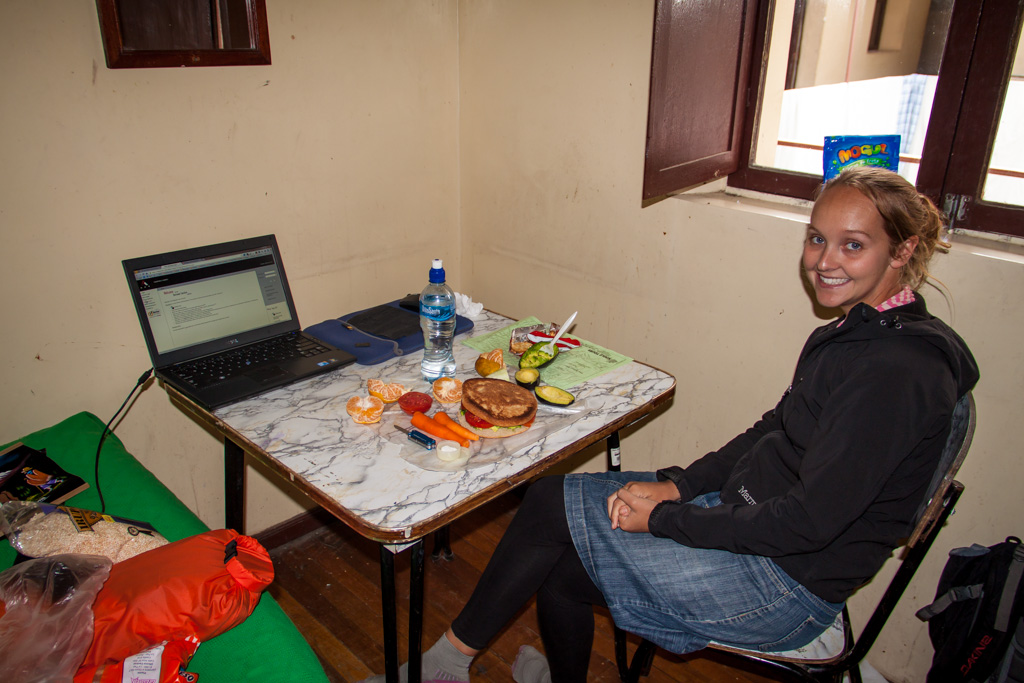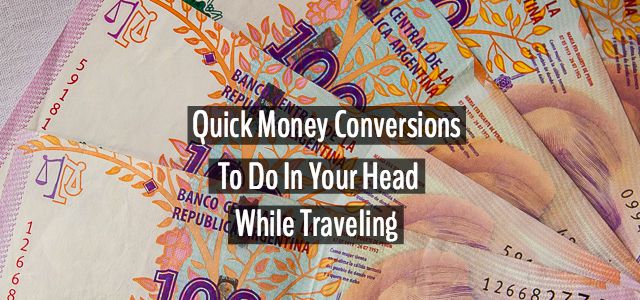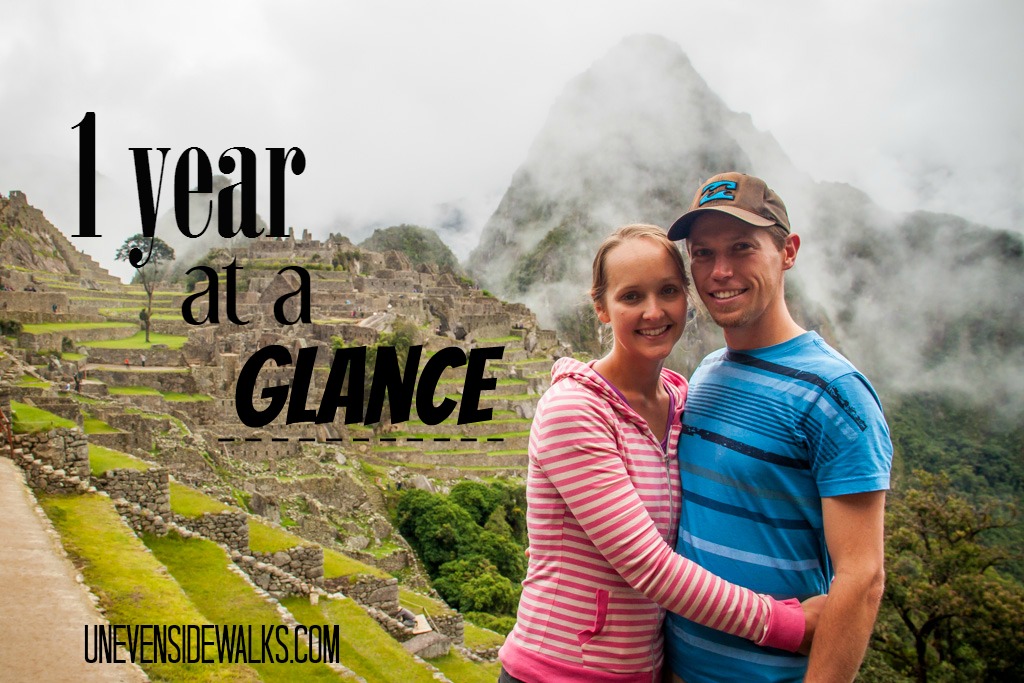What do You Mean You Don’t Accept Credit Cards???
Managing money while traveling takes quite a bit more time and effort than you may realize, especially if you’re planning on going on a long trip. It was a big change for us – coming from the credit card society in the US where you only have to think about paying one huge bill (or more) only once a month. There are so many things to think about – from online banking and exchange rates to fake bills and how to carry your money safely.
Some Tips for Managing Money While Traveling
We hope some of the things we learned might save you from pulling your hair out! The main challenge is that most of Central and South America runs on cash. Most restaurants, stores, markets, and buses only take cash. They have a big sign that says “SOLO EFECTIVO” – only cash. Some larger stores and hotels accept credit and cards, and they are getting more common, but still rare. You will most likely get charged a few foreign
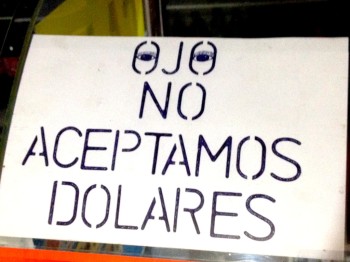 transaction fees by your bank unless you have one with free international withdrawals. Also, you’re not quite sure what exchange rate you’ll get from the local currency to your home currency. This trick bit us once in Argentina for a few hundred dollars… Some stores even refuse dollars, so you’re best off getting in the groove with the local currency right away.
transaction fees by your bank unless you have one with free international withdrawals. Also, you’re not quite sure what exchange rate you’ll get from the local currency to your home currency. This trick bit us once in Argentina for a few hundred dollars… Some stores even refuse dollars, so you’re best off getting in the groove with the local currency right away.
When we left the U.S., we thought we knew a bit about saving money and being frugal, but there was so much to learn once we began traveling. The concept of using cash really helps save money. There have been many studies done that show somebody will spend up to 100% more at a store when using a credit card rather than cash. The pain of paying with cash that you have to count out helps you to buy only what you need. A credit card delays the pain of paying, so there is a seemingly endless limit when you’re using it for purchases.
Start Using Cash Before You Leave
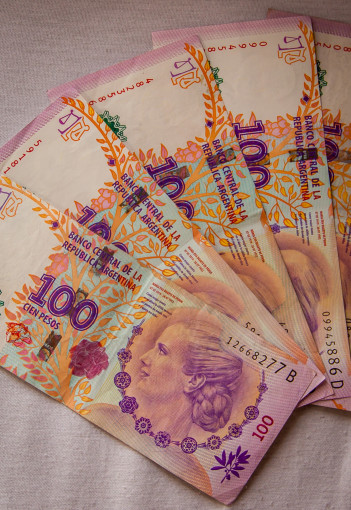
We recommend to start using cash for everything you can at least 2 months before you leave. We didn’t think to do this, but it would have helped us adjust to traveling much quicker. There is definitely a skill to keeping track of your cash and paying with it quickly, especially on buses!
Using cash helps you get a better “feel” for how much money you spend on big obvious things like groceries, restaurants, gas, and clothes, but also on all the little things like souvenirs, toothpaste, shampoo, computer accessories, haircuts, etc. When we arrived, it felt like we were spending so much money when we would go grocery shopping and spend $40 because we had to pay with cash. We considered everything we bought much more, and considered things like cheese, chips, and hamburgers a luxury.
The truth is, in the US we could rarely get out of Walmart for under $100 – Costco, a few hundred – all in the name of saving money buying in bulk… We shudder to think about spending that much now – because it is so painful to carry and shell out that much in cash!
Get comfortable carrying hundreds of dollars on you.
Often the robbers target tourists who look uncomfortable and keep touching their pocket or purse. They are watching you and know you are checking to make sure your wad of five hundred dollars is still there. Put it somewhere safe and don’t worry about it.
Read more about our tips for stashing money, passports, and valuables – some may be obvious, but some are tricky.
Since you’ll be needing quite a bit of cash, where do you find it – on trees?
These are a few ways to get the local currency (and often US dollars) – some much better than others.
Debit card:
This is the most popular way to pull local money from foreign ATMs. It has been very safe for us during our travels in any countries. ATMs are getting to be very common, even in smaller towns. Just keep an eye on your surroundings and be careful, especially at night.
Be sure you have a card with zero foreign transaction fees. This will save you a bundle! Read more near the bottom about which we recommend.
Some ATMs require a newer card that has a normal magnetic strip and also a chip in it. This helps prevent people from being able to access your bank account if they remotely read the magnetic strip with a new hacker technology. When we left the US in 2013 nobody had these types of cards, but they seem popular with other countries. You might look into getting one before you leave.
Simple ATM rules that may not be obvious to everybody:
Never let anyone help you with your card or PIN at an ATM. If it isn’t working there’s nothing you can do – don’t accept help from someone standing nearby to get it working. Inspect the card reader to make sure there isn’t an extra reader attached that could skim your card (for the thieves) as you insert it. Check to see there isn’t a camera on the ceiling or on the ATM pointed at the keypad to steal your PIN. Always cover the keypad when you type in your PIN.
Each ATM has different menus, but when the cash comes out, be sure to count it to double-check. It’s also a good idea to inspect the bills for fakes as soon as you can – not usually the best idea to hold them up to the light to look for watermarks while in the ATM booth though…
A trick to get the ATM to give you some smaller bills:
Type in a mixed number rather than a large whole number. You may have to try a few times to see what small denomination bills it has, depending on the country and the specific bank ATM. For example, instead of typing in 3000 bolivianos, put 2950 instead so it’ll give you smaller bills than the typical 100 b. notes.
Lastly, take your card and your receipt (if you asked for one) as soon as they pop out. If you are too busy counting your money or stashing it somewhere, it could suck your card back in. This is actually meant to help you out if you accidently forget to take it, but you may have a hassle getting it back from the bank in a timely manner.
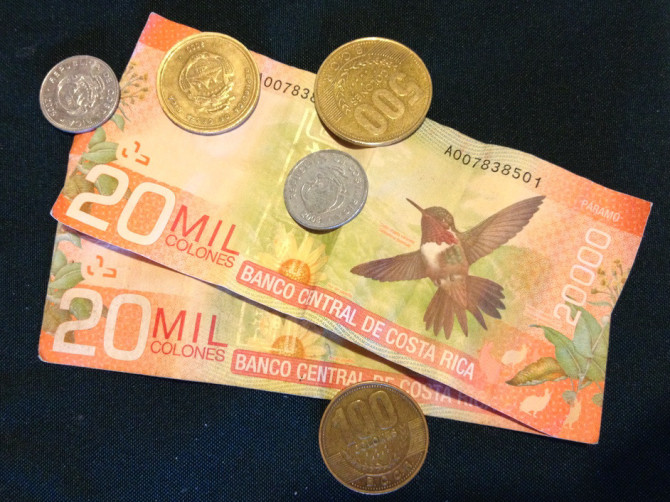
Countries that have ATMs with US dollars available:
central AMERICA
- All countries have both local and USD available.
South America
- Argentina: No – Dollars are very expensive to buy.
- Bolivia: Yes
- Chile: No – However, you can exchange Chile pesos for USD at all exchange houses for a fair rate
- Ecuador: Yes – The country’s official currency is USD.
- Peru: Yes
- Uruguay: Yes – This country is the main source of USD for Buenos Aires in Argentina.
Managing Money While Traveling – Bring Cash With You:
This is always a good idea, but many people forget since they use credit cards all the time. Carry some small bills in case you get to a country and don’t have time right away to find an ATM or exchange house. Carry as much you are comfortable with – maybe enough for a few weeks of traveling. Don’t try to carry everything you’ll need for your entire trip, unless you have some specific reason like running away from the police with no bank account…
If you can, bring US dollars with you, or exchange for them once you are on your trip. USD are like gold in Central and South America. I’m not saying this because I’m from the US, but every country we’ve been to in Central and South America really wants to buy dollars. Most stores will give you a price in US dollars if you run out of local money (but don’t expect a great exchange rate).
It is especially important to bring USD into Argentina! Most exchange houses will buy euros, pounds, and the currency of the neighboring countries, but sometimes it is hard to exchange uncommon currencies. Many countries required that we pay official border fees in US dollars – not even in their own currency! This was a hassle in Bolivia since we had used up most of our dollars in Argentina.
Cash Advance on your Credit or Debit Card:
I fortunately haven’t needed this, but I asked my bank about it for my debit card and it sounded like the same transaction as using an ATM, but from inside the bank and you need your passport. For credit cards they usually charge a huge interest rate or fee on cash advances, so ask your bank beforehand and only use this in an emergency.
Travelers’ Checks:
Traveler checks aren’t very popular these days for a few reasons. The exchange house usually charges 3-5% to cash them for you. This is a pretty high commission rate since they usually cost you to buy them in the first place. Also, if your signature is a bit different than what is on the checks, they will likely deny them.
This happened to me in Guatemala – I tried to use some that I had bought a few years prior and the hotel flat out rejected them. There was nothing I could do except bring them back with me and cash them in at the bank I originally bought them at.
Wiring Money from Home:
Wiring money has gotten a bad rap because of all the scammy online businesses that ask for you to wire them money so you can receive your long lost relative’s inheritance. Don’t go for that.
Quite the contrary – in Central and South America wiring money to someone you know is simple, cheap, and safe. We had to pay for a tour reservation and the best option with the least fees was to wire the money using Western Union. They have safe methods of making sure the money only gets to the proper recipient. We were timid at first because we were sending a large amount, but everything turned out fine.
To Send Money Using Western Union:
You need the person’s name (spelled correctly) and the specific Western Union office where they will pick up the money (anywhere in the world). Then, you send them the transaction number and they can go pick up the money right away. You can send money online, by phone, or in person (cheapest!) at one of their offices.
They have a promotion going where both you and I can each get $20 when you send your first money transfer with them. Click here – it’s easy and doesn’t cost you an extra penny!
How to Keep Track of All That Money!
Money without a record is like a sink without a drain. The first piece of advice we received was to keep track of everything we bought. We thought this was crazy obsessive and would be a huge hassle.
We’ve changed our tune since we’ve found an awesome iPhone app called Trail Wallet. Now it is almost a daily habit and takes very little time. We have realized how important it is to know exactly how much we’re spending, because that determines what we can do and buy when we’re traveling.
This is super important when living or traveling abroad because sticking to a budget is everything. Often, people don’t have any income when traveling, so keeping track of your “burn rate” keeps you on in-line with your plan. We know first hand that it’s very easy to use up your savings more quickly than you planned. We started our long trip with no income, so every dollar we spent on something unnecessary was one less we would have at the end of our trip, making it shorter.
Don’t Skip This Part of Managing Your Money While Traveling – It’s Super Easy!
We use an iPhone app called Trail Wallet that makes it super easy and fun to keep track of everything from a 50 cent empanada to a $1,000 plane ticket. It even allows you to split up big purchases across multiple days. It costs $2.99 from the App Store, but you’ll forget about it after your second week of using it. It is so important we have a whole separate review on it here! Trail Wallet App Review
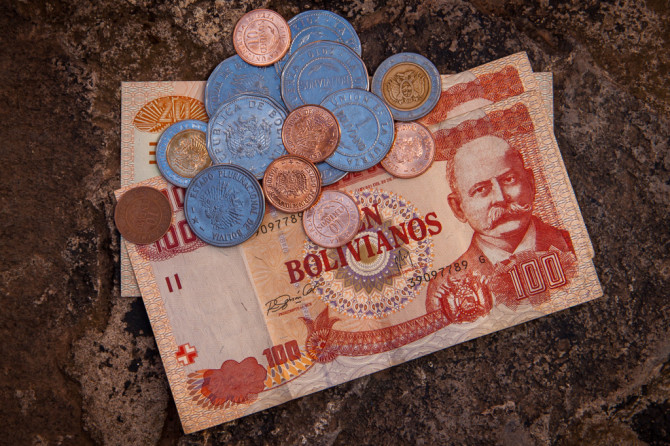
Banks With No International Debit Card Fees
Last, but most important, is a bank that doesn’t charge any fees for using your debit card in another country. We started off with two banks – Schwab and Capital One 360 (formerly ING Direct) because they both advertised no fees for using the card in another country. Schwab was the winner here.
Schwab
They have been true to their promise, and they refund all fees charged by the ATM and all foreign transaction fees at the end of each month. We haven’t had any problems with them and they are really friendly to talk to on the phone.
Capital One 360
This bank, however, has fine print in their wording. They don’t refund any fees charged by the bank that owns the ATM you use, which is usually a foreign bank. They stick to their guns saying they don’t charge any fees, which is true, but it often costs $6 per ATM transaction outside of the US. We are out quite a bit of money in fees from them before realizing they only refund a few of the fees, so we only keep our account as an emergency backup.
Good luck managing your money while traveling! Please share any more tips you have!
